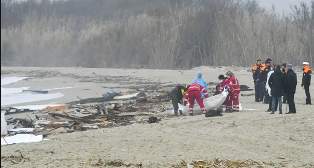Living with severe asthma means living with the fear that a serious — even life-threatening — attack could strike at anytime, anywhere.
It is trying to avoid a situation where, “I’ll have an attack someday and I’ll be in a place where nobody will know what to do about me,” explained Lynn, a Canadian who has lived with the illness for 28 years.
Asthma carries an immense personal toll, and, with around 16 million people living with a severe form of the disease globally, it also carries a significant impact for healthcare systems and society.1
With around 16 million people living with a severe form of the disease globally, it also carries a significant impact for healthcare systems and society.1
While those living with severe asthma make up approximately only 5-10 percent of global cases, they account for more than 50 percent of the healthcare costs associated with the condition.1,2
And, given the steady increase in the number of people worldwide living with asthma, a growing imperative exists to understand and improve prevention and management strategies for the disease.
To explore this further, the Copenhagen Institute for Futures Studies (CIFS) undertook the creation of the Severe Asthma Index — an independent, first-of-its-kind instrument to assess the state of severe asthma care and support in nearly 30 OECD countries around the world.
“We tracked several factors concerning health policy, access to and quality of care, clinical and population health indicators, and environmental factors that led to our conclusions,” explained Bogi Eliasen, director of health at CIFS. “Through this overview, we aim to help advocates, clinicians, public health officials and policymakers understand the specific and targeted actions they can take to help improve care for people in their communities impacted by severe asthma.”
By evaluating different countries’ approaches to severe asthma across five diverse categories of indicators, the Index gathered various data sources to support a comprehensive analysis of severe asthma care and prevention approaches in each location.
By evaluating different countries’ approaches to severe asthma across five diverse categories of indicators, the Index gathered various data sources to support a comprehensive analysis of severe asthma care and prevention approaches in each location.
Key findings found clear differences across countries, with Australia scoring the highest (73/100) followed by France, New Zealand, Italy, and the U.K.3 Conversely, Latvia scored the lowest (48/100), followed by Slovenia, Estonia, Belgium, and Slovakia.3
Interestingly, while findings backed up certain expectations, there were also situations where countries ranked higher — or lower — than anticipated.
For example, Australia’s ranking was as high as expected due to its strong level of implementation of asthma strategies and tobacco control policies.3 Finland (64.8/100), however, ranked lower than expected due to a moderate implementation of their asthma strategy, alongside limited alignment of care guidelines with international best practice and one of the lowest levels of access to treatment (specialist care and biologics).3
“We found that the best indicator for a country’s good performance was how robust a policy context it already had in place,” said Eliasen. “Countries with a dedicated severe asthma strategy, comprehensive care guidelines, and a severe asthma registry tended to have a higher score in the Index.”
To this end, the Index found that while most countries have some form of guidelines for severe asthma, less than half have a national strategy for asthma control, prevention, and/or management.3
While most countries have some form of guidelines for severe asthma, less than half have a national strategy for asthma control, prevention, and/or management.3
“Varying alignment with internationally recognized best practices remains a limiting factor in access to care, and the Index shows a clear need for many countries to develop a dedicated and harmonized asthma strategy,” explained Eliasen.
A similar lack of alignment was seen in the reporting standards and access to severe asthma-specific data, making it difficult to fully assess the burden of the disease.3 “Considering the significant impact of this disease, such a lack of data and inconsistent recording of data was really surprising,” explained Patrick Gallen, futurist at CIFS. One such area of data concerns the use of oral corticosteroids (OCS) to treat severe asthma. Chronic OCS use can indicate a patient’s disease is not well-controlled, yet most countries’ healthcare systems still fail to systematically track the use of these steroids, which can lead to long-term negative health affects for patients as well.
“The very lack of this indicator highlights the need for improved data collection and reporting on various aspects of severe asthma,” Gallen added. “More data is needed to make sure OCS can be included in future editions of the Index.”
For patients, the country where they live can also determine the level of access to care with shortcomings in connecting with to specialists, using telemedicine and access to proper diagnostic tools seen most pressingly in Japan, Greece, Estonia, Lithuania, and Slovenia.3
“The issue is not a need for more resources, but for better allocation to provide consistent quality of care,” explained Gallen. “For example, more efficient care pathways and reimbursement policies, including access to biologics — a pillar of severe asthma treatment — could make a bigger difference for patient outcomes than more resource investment of other types.”
Finally, the Index identified a need to reevaluate how patients receive the support, education, and tools that empower them in their patient care journey.3 The Index findings show that it is vital that policymakers look at severe asthma as more than a clinical phenomenon. Patient outcomes and experiences both impact and are impacted by a multitude of systemic, policy, and environmental factors — and this is where the need for a “whole system” approach comes to light.
“Fixing one area isn’t enough. We must take stock of the many needs of those living with, and treating severe asthma, to effectively manage it among country populations,” added Eliasen.
The current lack of comprehensive and well implemented national strategies for asthma (and the even greater lack of focus on severe asthma) shows the gap that policymakers should urgently address.
Changing how we define, treat, and prevent severe asthma requires significant support from all stakeholders — not only healthcare professionals — working to address and prioritize severe asthma as the complex and burdensome chronic condition it is.
MAT-GLB-2302405 v2.0 | July 2023
[1] O. Enilari, and S. Sinha, “The Global Impact of Asthma in Adult Populations”, Ann Glob Health, vol 85(1), no. 2, 2019
[2] Al Efraij, K. and J.M. FitzGerald, Current and emerging treatments for severe asthma. J Thorac Dis, 2015. 7(11): p. E522-5.
[3] Copenhagen Institute for Futures Studies. (2023). The Severe Asthma Index. [https://www.severeasthmaindex.org/]




